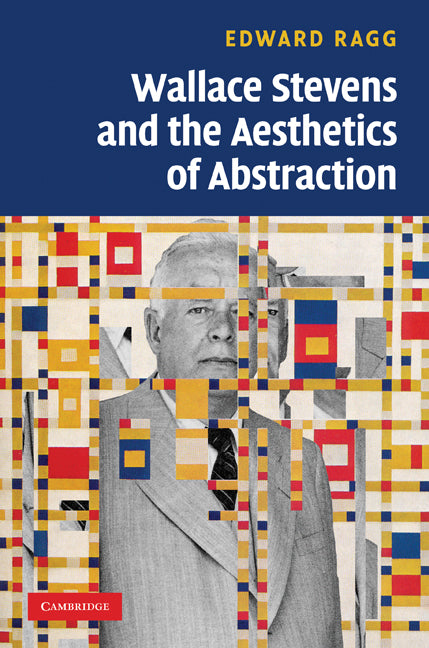Freshly Printed - allow 8 days lead
Couldn't load pickup availability
Wallace Stevens and the Aesthetics of Abstraction
This book embraces philosophical and artistic perspectives, analyzing Stevens's place within Modernist debates concerning literature, painting, and representation.
Edward Ragg (Author)
9780521190862, Cambridge University Press
Hardback, published 15 July 2010
262 pages
22.9 x 15.2 x 1.6 cm, 0.52 kg
'[This book] is tightly argued throughout, drawing upon Stevens' essays and letters to illustrate the poet's engagement with modernist art theory and philosophy, and to map his evolving sense of an abstract aesthetic … Ragg makes a particularly strong case for considering Stevens' gustatory imagination. Ever alert to the pleasures of eating and drinking in Stevens' poetry, [he] argues that the physical and sensual 'are often the sites for the catalysis of his abstract imagination', adding that 'the tendency to oppose the sensual to the abstract denies readers insight into this aspect of Stevens' work'.' Alex Runchman, Irish Journal of American Studies
Edward Ragg's study was the first to examine the role of abstraction throughout the work of Wallace Stevens. By tracing the poet's interest in abstraction from Harmonium through to his later works, Ragg argues that Stevens only fully appreciated and refined this interest within his later career. Ragg's detailed close-readings highlight the poet's absorption of late nineteenth century and early twentieth century painting, as well as the examples of philosophers and other poets' work. Wallace Stevens and the Aesthetics of Abstraction will appeal to those studying Stevens as well as anyone interested in the relations between poetry and painting. This valuable study embraces revealing philosophical and artistic perspectives, analyzing Stevens' place within and resistance to Modernist debates concerning literature, painting, representation and 'the imagination'.
Acknowledgments
List of abbreviations
Introduction: 'Stevensian' and the question of abstraction 1935–2009
1. The abstract impulse: from anecdote to 'new romantic' in Harmonium (1923) and Ideas of Order (1935)
2. The turn to abstraction: Owl's Clover (1936) and the 'un-locatable' speaker in The Man with the Blue Guitar (1937)
3. The 'in-visible' abstract: Stevens' idealism from Coleridge to Merleau-Ponty
4. Abstract figures: the curious case of the idealist 'I'
5. Abstract appetites: food, wine and the idealist 'I'
6. The pure good of theory: a new abstract emphasis
7. Bourgeois abstraction: poetry, painting and the idea of mastery in late Stevens.
Subject Areas: Literary studies: poetry & poets [DSC], Literary studies: general [DSB], Literary theory [DSA], Literature: history & criticism [DS], Poetry by individual poets [DCF], Poetry [DC], Literature & literary studies [D]


